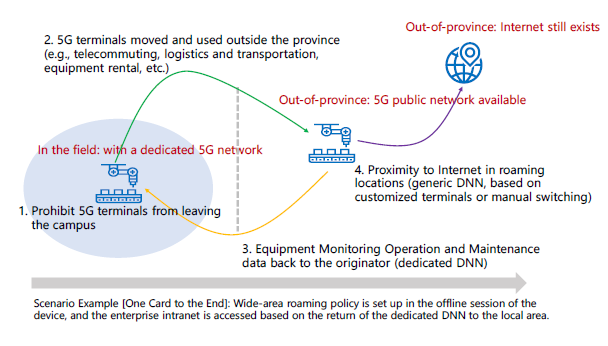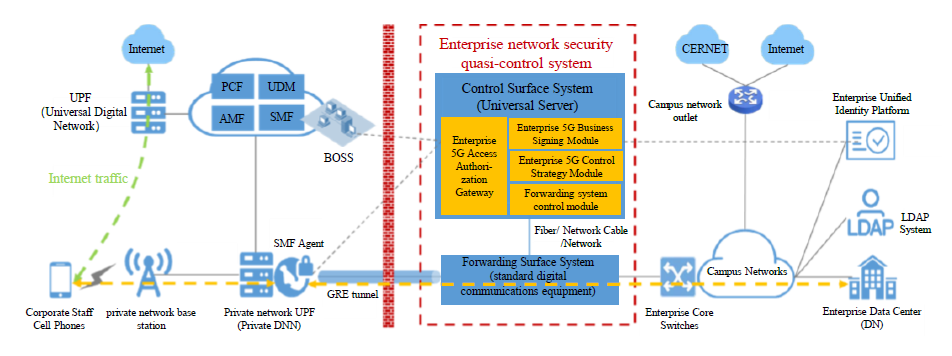5G Technology Significance: The advent of 5G technology marks a significant leap in the world of telecommunications. Unlike its predecessors, 5G offers unparalleled speed, reduced latency, and the ability to connect a vast number of devices simultaneously. This technology is not just an upgrade in speed; it’s a fundamental shift that enables new applications and use cases, from the Internet of Things (IoT) to autonomous vehicles, smart cities, and beyond.
Importance of Private Networks in 5G: In the realm of 5G, private networks play a pivotal role, especially for businesses and industries. These networks offer dedicated bandwidth, enhanced security, and customized services, catering specifically to organizational needs. They are crucial in scenarios where data privacy, high reliability, and low latency are non-negotiable, such as in manufacturing plants, healthcare facilities, and critical infrastructure.
Background and Context
Evolution of Mobile Networks: The journey from 1G to 5G has been transformative. Each generation brought new capabilities – from voice-only 1G to the internet-enabled 2G, multimedia 3G, and the high-speed data of 4G. Now, 5G is set to revolutionize everything by offering speeds up to 100 times faster than 4G, minimal latency, and massive network capacity.
Private Networks in 5G: A 5G private network is a localized, standalone network that uses 5G technologies to deliver specific services within a confined area, like an industrial plant. Unlike public networks, they are designed for specific use cases with tailored services and security measures. This customization ensures that businesses can leverage the full potential of 5G in a controlled environment.
TAC in Network Management: Tracking Area Code (TAC) is a crucial component in mobile network management. It helps in identifying and grouping cell sites into tracking areas, facilitating efficient management of mobile devices and their mobility. In the context of 5G private networks, TAC becomes even more significant as it aids in managing network access and ensuring security within a defined geographical area.

The Need for Area Restriction in 5G Private Networks
Challenges in Network Management: As businesses adopt 5G, managing network access and security becomes complex. The need to control who accesses the network and how resources are allocated is critical, especially in sensitive environments like industrial automation, where data security and operational continuity are paramount.
Benefits of Area Restriction: Implementing area restriction in 5G networks allows businesses to control network access within specified zones. This ensures that only authorized devices and personnel can access sensitive data and systems, thereby enhancing security and reducing the risk of cyber threats.
TAC Control Policy for 5G Private Networks
Technical Aspects of TAC Control Policy: TAC control policy in 5G networks involves defining specific areas or zones where certain network policies apply. This can include access controls, data routing rules, and service quality parameters. By using TAC, network administrators can effectively manage and monitor network access and usage within these restricted areas.
Implementation in Real-World Scenarios: In practical scenarios, TAC control policy can be used in various ways. For instance, in a manufacturing plant, TAC can be used to ensure that only devices within the plant have access to the network, thereby securing operational data. Similarly, in a hospital, TAC can restrict network access to sensitive areas like the ICU, ensuring patient data privacy and system security.

Applications and Case Studies
Industry Applications: The application of TAC control policies in 5G private networks spans various industries. In manufacturing, it ensures secure and efficient machine-to-machine communication. In healthcare, it supports telemedicine and patient monitoring systems. In logistics, it enables real-time tracking and automation.
Case Studies: Present real-world examples where TAC control policies have been successfully implemented. This could include a smart factory scenario where TAC policy has streamlined operations, or a healthcare setting where patient data security has been enhanced through area-restricted network access.

Benefits of Area Restriction in 5G Networks
Advantages: The primary benefits include enhanced security, as it prevents unauthorized access; improved network management, as it allows for tailored services within specific areas; and optimized resource utilization, as network resources are allocated based on specific area needs.
Operational Efficiency and Cost Savings: By implementing area restriction, businesses can achieve higher operational efficiency through better network management. This leads to cost savings, as resources are used more effectively, and security risks, which can be costly, are minimized.
Future Trends and Developments
Emerging Technologies: The future of 5G private networks and area restriction schemes is likely to be influenced by emerging technologies like AI, machine learning, and edge computing. These technologies could enhance the capabilities of 5G networks, making them more intelligent, efficient, and secure.
Integration with Current Practices: Discuss how these emerging technologies might integrate with current 5G network practices, potentially leading to more advanced and automated network management solutions.

Conclusion
Summary: Recap the key points discussed in the article, emphasizing the importance of TAC control policy in the effective management of 5G private networks and the benefits it brings to various industries.
Importance of TAC Control Policy: Conclude by highlighting the critical role of TAC control policy in ensuring secure, efficient, and tailored network services in the era of 5G, which is essential for the digital transformation of businesses and industries.
